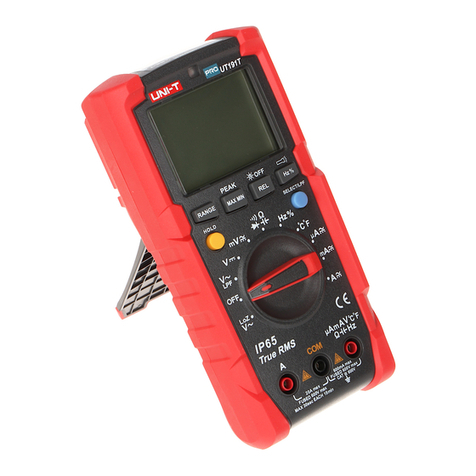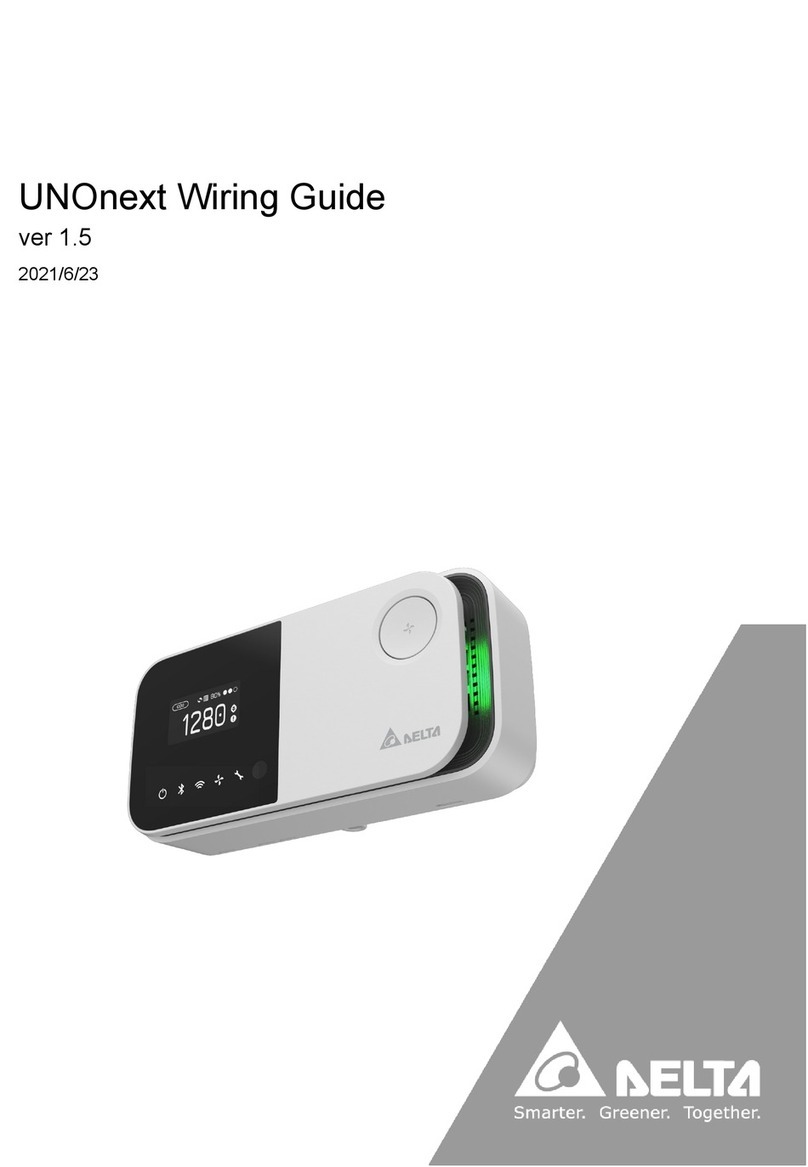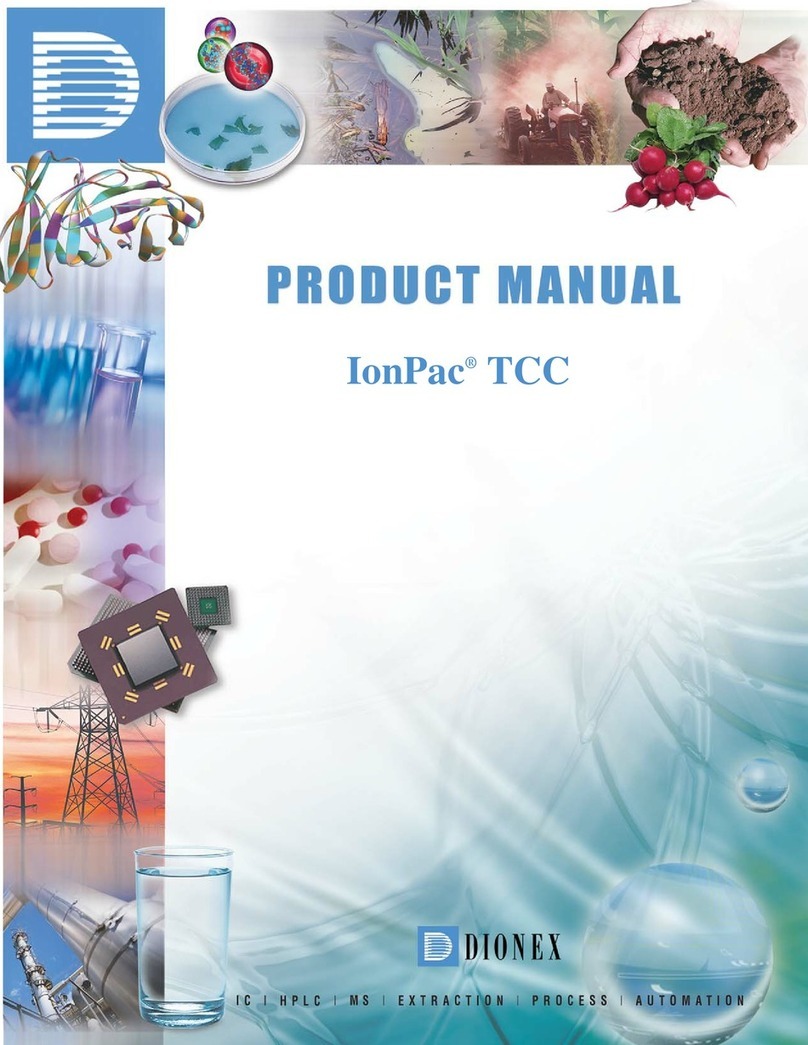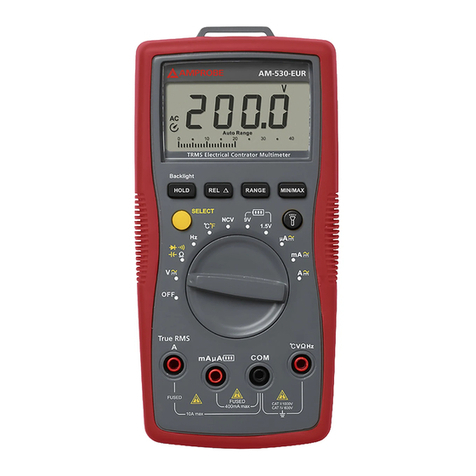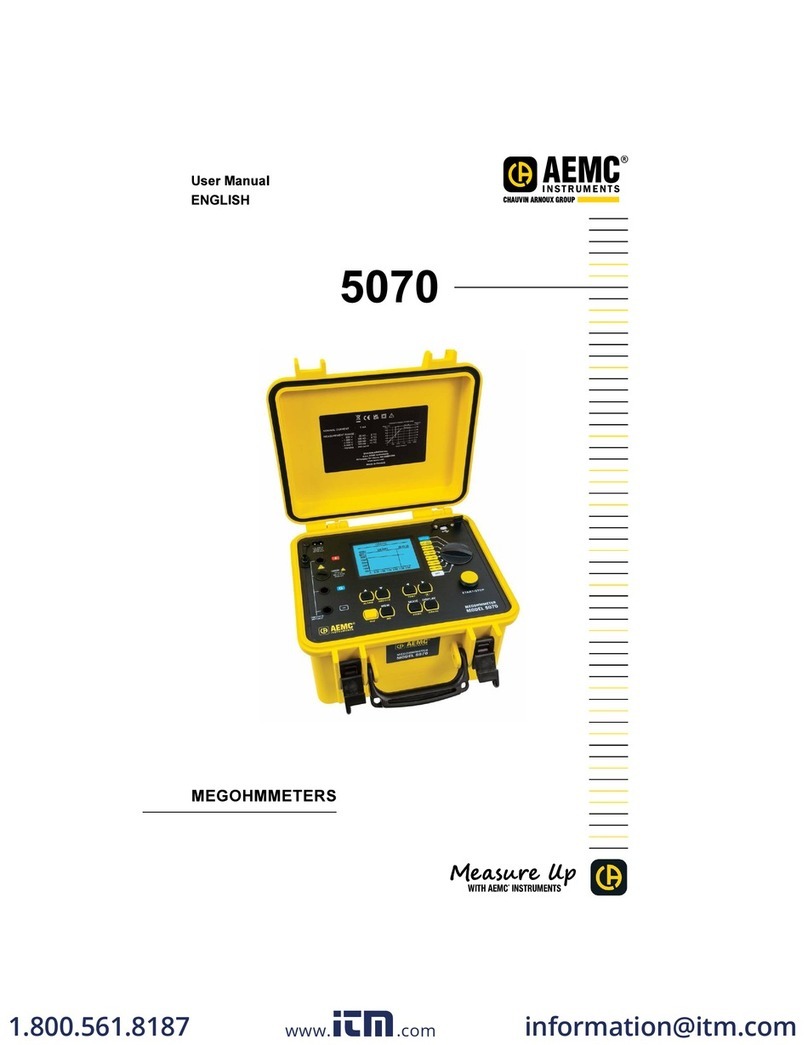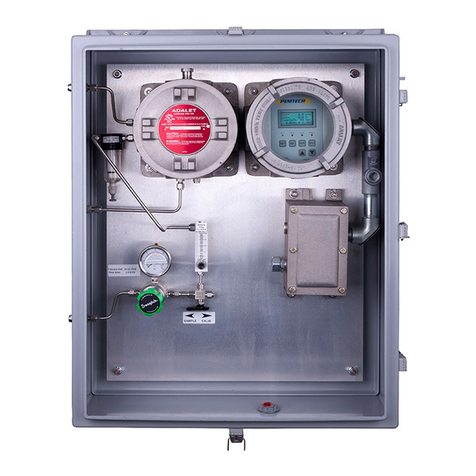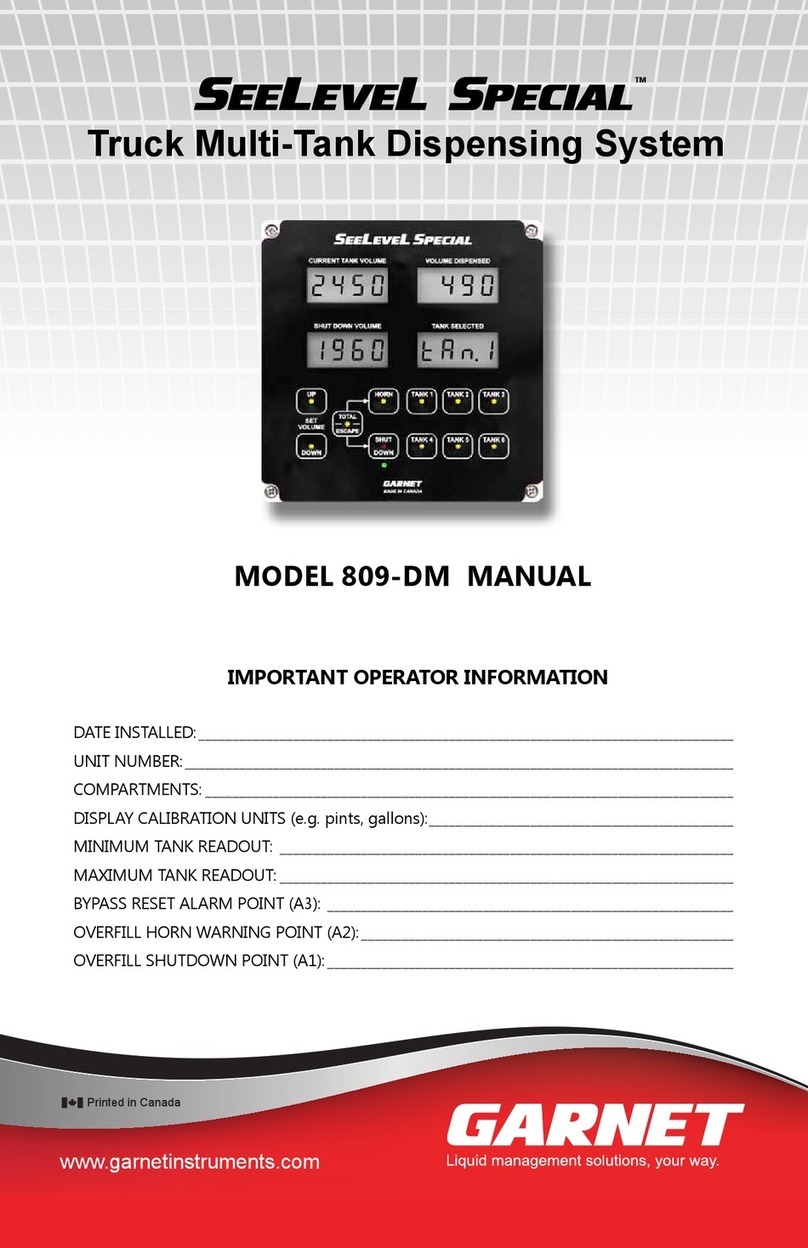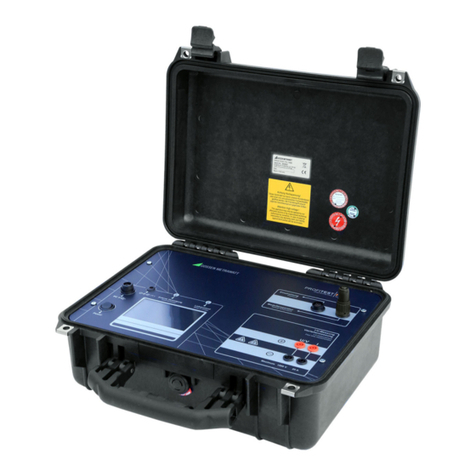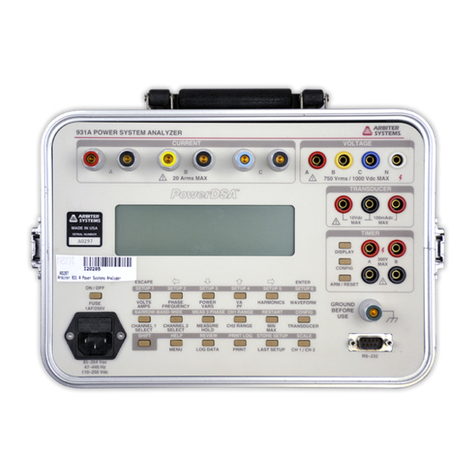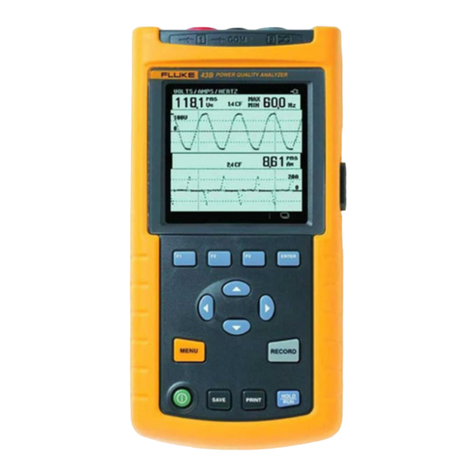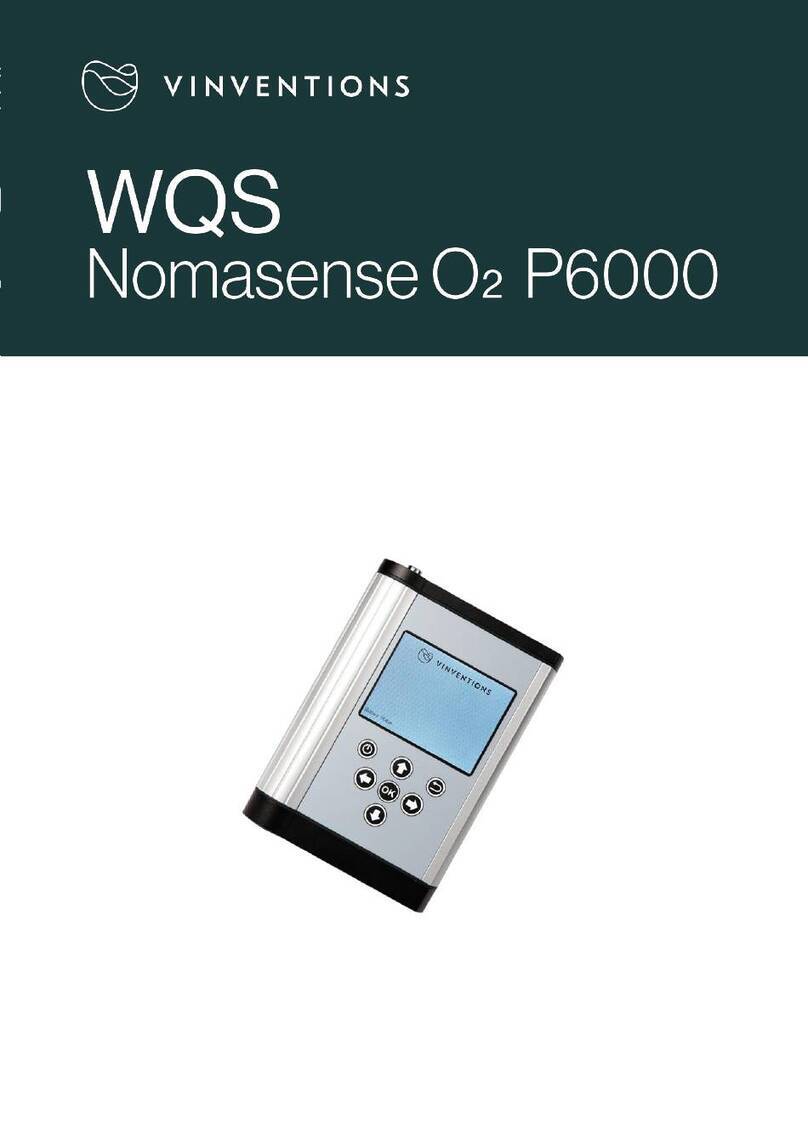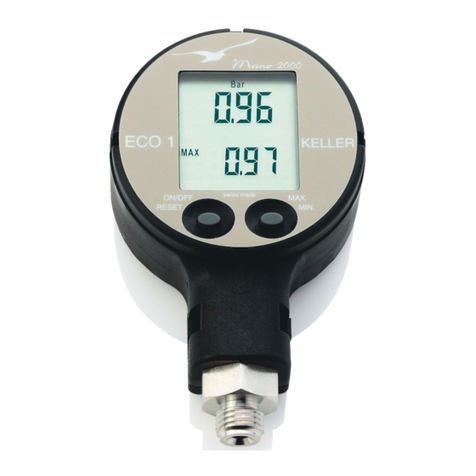Delta HD2114P.0 User manual

Operating manual
Manometers for Pitot tubes /
thermometers
HD2114P.0 – HD2114P.2
HD2134P.0 – HD2134P.2
www.deltaohm.com
Companies / Brands of GHM
English
Keep for future reference.

HD2114P/HD2134P - 2 - V2.3
CONTENTS
INTRODUCTION..................................................................................................................................................... 3
KEYBOARD AND MENU DESCRIPTION ............................................................................................................ 8
THE PROBES..........................................................................................................................................................14
OPERATION ............................................................................................................................................................15
DIMENSIONS OF PITOT TUBES..................................................................................................................................16
FLOW RATE MEASUREMENT ....................................................................................................................................16
TEMPERATURE MEASUREMENT ...............................................................................................................................18
WARNINGS AND OPERATING INSTRUCTIONS ..............................................................................................20
INSTRUMENT SIGNALS AND FAULTS..............................................................................................................21
LOW BATTERY WARNING AND BATTERY REPLACEMENT.......................................................................23
INSTRUMENT STORAGE.....................................................................................................................................24
SERIAL INTERFACE AND USB ...........................................................................................................................25
STORING AND TRANSFERRING DATA TO A PERSONAL COMPUTER......................................................27
THE LOGGING FUNCTION -ONLY FOR HD2114P.2 AND HD2134P.2 .........................................................................27
CLEARING THE MEMORY -ONLY FOR HD2114P.2 AND HD2134P.2..........................................................................27
THE PRINT FUNCTION -ONLY FOR HD2114P.2 AND HD2134P.2.............................................................................28
CONNECTION TO A PC........................................................................................................................................29
CONNECTION TO THE RS232C SERIAL PORT OF THE INSTRUMENT -ONLY FOR HD2114P.2 AND HD2134P.2 ..............29
CONNECTION TO THE USB 2.0 PORT OF THE INSTRUMENT -ONLY FOR HD2114P.2 AND HD2134P.2..........................29
NOTES ABOUT WORKING AND OPERATIVE SAFETY..................................................................................30
INSTRUMENT TECHNICAL CHARACTERISTICS...........................................................................................31
TYPE KTHERMOCOUPLE PROBES ............................................................................................................................33
ORDER CODES ......................................................................................................................................................34

HD2114P/HD2134P - 3 - V2.3
INTRODUCTION
The HD2114P.0 and HD2114P.2, HD2134P.0 and HD2134P.2 are portable micromanometers
using Pitot or Darcy tubes and a large LCD display. They are used to perform measurements in the
fields of air conditioning, heating and ventilation.
They measure the differential pressure detected by a Pitot or Darcy tube connected to the instrument
inputs acquiring the wind speed and flow rate inside pipelines and vents. They also measure the
temperature using a type K thermocouple sensor.
The HD2114P.2 and HD2134P.2 instruments are dataloggers. They memorize up to 36,000
samples which can be transferred from the instrument connected to a PC via the RS232C serial port
or USB 2.0 port. The storing interval, printing, and baud rate can be configured using the menu.
The HD2114P.2 and HD2134P.2 instruments can transfer via the RS232C serial port the acquired
measurements to a PC or to a portable printer in real time.
The Max, Min and Avg function calculates the maximum, minimum or average values. Other
functions include: the relative measurement REL, the HOLD function, and the automatic turning off
which can also be disabled.
The instruments have IP66 protection degree.
If not otherwise specified, this manual's descriptions are intended to be applicable to all
models.

HD2114P/HD2134P - 4 - V2.3
HD2114P.0 - HD2134P.0
Micromanometer with Pitot tube - Thermometer

HD2114P/HD2134P - 5 - V2.3
HD2114P.0 - HD2134P.0
1. Input for thermocouple K, standard miniature connector.
2. Positive input (+) into the pressure sensor. Quick coupling Ø 5mm
3. Battery symbol: displays the battery charge level.
4. Function indicators.
5. Secondary display line.
6. HOLD/key: freezes the measurement during normal operation; in the menu, increases the
current value.
7. FUNC/ENTER key: during normal operation displays the maximum (MAX), the minimum
(MIN) and the average (AVG) of current measurements; in the menu, confirms the current
selection.
8. REL/key: enables the relative measurement (displays the difference between the current
value and the logged value when the key is pressed); in the menu, decreases the current value.
9. MENU key: allows access to and exit from the menu.
10. °C/°F-ESC key: when the thermocouple probe is not connected, it allows manual modification
of the temperature. When double pressed, changes the unit of measurement for temperature
from degrees Celsius to Fahrenheit; in the menu, cancels the operation in progress without
making changes.
11. UNIT/DUCT CALC key: during normal operation selects the unit of measurement for the
main variable; when pressed together with the FUNC key, starts the duct flow rate calculation
procedure.
12. ON-OFF/AUTO-OFF key: turns the instrument on and off; when pressed together with the
HOLD key, disables the automatic turn off.
13. Peak, MAX, MIN and AVG symbols.
14. Main display line.
15. Degree of multiplication -3, 3 or 6: the apex, if present, indicates that the displayed
measurement must be divided by 1000 (apex "-3"), multiplied by 1000 (apex "3") or by
1,000,000 (apex "6").
16. Line for symbols and comments.
17. Negative input (-) into the pressure sensor. Quick coupling Ø 5mm

HD2114P/HD2134P - 6 - V2.3
HD2114P.2 - HD2134P.2
Micromanometer with Pitot tube - Thermometer

HD2114P/HD2134P - 7 - V2.3
HD2114P.2 - HD2134P.2
1. Input for thermocouple K, standard miniature connector.
2. Positive input (+) into the pressure sensor. Quick coupling Ø 5mm
3. External auxiliary power supply connector input (positive at centre).
4. Battery symbol: displays the battery charge level.
5. Function indicators.
6. Secondary display line.
7. HOLD/key: freezes the measurement during normal operation; in the menu, increases the
current value.
8. FUNC/ENTER key: during normal operation displays the maximum (MAX), the minimum
(MIN) and the average (AVG) of current measurements; in the menu, confirms the current
selection.
9. REL/key: enables the relative measurement (displays the difference between the current
value and the logged value when the key is pressed); in the menu, decreases the current value.
10. SERIAL/ERASE LOG key: starts and ends the data transfer to the serial communication port.
In the menu, clears the data contained in the instrument's memory.
11. LOG/DUMP LOG key: during normal operation, starts and ends the saving of the data in the
internal memory; in the menu, starts the data transfer from the instrument's memory to the PC.
12. Mini-USB type B connector for USB 2.0. For the connection to PC (with cable CP23).
13. MENU key: allows access to and exit from the menu.
14. °C/°F-ESC key: when the thermocouple probe is not connected, it allows manual modification
of the temperature. When double pressed, changes the unit of measurement for temperature
from degrees Celsius to Fahrenheit; in the menu, cancels the operation in progress without
making changes.
15. UNIT/DUCT CALC key: during normal operation selects the unit of measurement for the
main variable; when pressed together with the FUNC key, starts the duct flow rate calculation
procedure.
16. ON-OFF/AUTO-OFF key: turns the instrument on and off; when pressed together with the
HOLD key, disables the automatic turn off.
17. Peak, MAX, MIN and AVG symbols.
18. Main display line.
19. Degree of multiplication -3, 3 or 6: the apex, if present, indicates that the displayed
measurement must be divided by 1000 (apex "-3"), multiplied by 1000 (apex "3") or by
1,000,000 (apex "6").
20. Line for symbols and comments.
21. 8-pole MiniDin connector for RS232C. For the connection to PC (with cable HD2110CSNM or
C206) or printer (with cable HD2110CSNM).
22. Negative input (-) into the pressure sensor. Quick coupling Ø 5mm

HD2114P/HD2134P - 8 - V2.3
KEYBOARD AND MENU DESCRIPTION
Foreword
The instrument keyboard is composed of single-function keys, like the MENU key, and double-
function keys such as the ON-OFF/Auto-OFF key.
In the double-keys, the function in the upper part is the "main function", while the one in the bottom
part is the "secondary function". When the instrument is in standard measurement mode, the main
function is active. In the menu or in conjunction with the FUNC key, the secondary function is
enabled.
The pressing of a key is accompanied by a short confirmation beep: a longer beep sounds if the
wrong key is pressed.
Each key specific function is described in detail below.
ON-OFF/AUTO-OFF key
The instrument is turned on and off using the ON/OFF key. The turning on enables all display
segments for a few seconds, displays the setting of the Pitot or Darcy tube constant (please see the
Cost_PIT_DARC parameter on page 11) and sets the instrument ready for normal measurement.
If no thermocouple probe is connected to the input, it is the manual temperature which is
displayed in the secondary line. This value is 25°C by default.
+
Automatic turning off
The instrument has an AutoPowerOff function that automatically turns the instrument off after about
8 minutes if no key is pressed during the intervening time. The AutoPowerOff function can be
disabled by holding the HOLD key pressed down when turning the instrument on: the battery
symbol will blink to remind the user that the instrument can only be turned off by pressing the
<ON/OFF> key.
The automatic turning off function for the HD2114P.2 and HD2134P.2 models is disabled
when external power is used. On the other hand, it cannot be disabled when the batteries are
discharged.

HD2114P/HD2134P - 9 - V2.3
FUNC/ENTER key
During normal measurement this enables the display and logging of the maximum (MAX),
minimum (MIN) and average (AVG) value of the measurements captured by the Pitot tube
connected to the instrument, updating them with the acquisition of new samples. The acquisition
frequency is once a second.
The calculation is performed on the pressure, wind speed or flow rate appearing on the display upon
pressure of the FUNC key: by changing the unit of measurement, the Max, Min and Avg values are
cleared.
The MAX, MIN and AVG measurements remain in the memory until the instrument is on, even
after exiting the calculation function. To reset the previous values and restart with a new
measurement session, press FUNC until the message "FUNC CLR" appears, then use the arrows to
select YES and confirm using ENTER.
In the menu, the ENTER key confirms the current parameter and then goes to the next one. Pressed
together with the UNIT/DuctCalc key, enables the flow rate calculation (please see the UNIT key
description).
Attention: the data captured using the Record function cannot be transferred to the PC.
HOLD/key
It increases the current parameter when used in the menu; when used in measurement mode, it
freezes the measurement in progress, and upon application of pressure on the key, the message
HOLD appears in the upper side of the display. To return to the current measurement, press the
key again.
Upon turning on the instrument, the AutoPowerOff function can be disabled by holding the HOLD
key down (please see the ON-OFF key description).
UNIT key
In measurement mode, it allows selection of the unit of measurement of the pressure, wind speed
and calculated flow rate (shown in the central line of the display). By repeatedly pressing the key,
the different units of measurement are displayed in sequence: Pa, mbar, mmH2O, PSI for the
differential pressure, m/s, km/h, ft/m, mph, knot for the wind speed and l/s, m3/h, cfm for the flow
rate.
This setting changes the information displayed and, for the HD2114P.2 and HD2134P.2 models the
immediate print of data (SERIAL key).
The data recorded using the LOG function (HD2114P.2 and HD2134P.2) keep the chosen unit
of measurement displayed during logging.
The unit of measurement associated with the data sent to the printer or PC through the serial
port using the SERIAL function (HD2114P.2 and HD2134P.2), must be selected before
starting the print function.

HD2114P/HD2134P - 10 - V2.3
°C/°F - ESC key
The measured temperature value is used to compensate the wind speed measurement. When the
temperature probe is connected, the key changes the unit of measurement from degrees Celsius to
Fahrenheit.
If the probe is not present, the compensation temperature must be entered manually: to manually
change the value shown in the display lower line, press °C/°F once. The temperature indicated starts
blinking. While the display is blinking, it is possible to change the compensation temperature in the
-200…+600°C range using the arrows (and ). Confirm using ENTER. The display stops
blinking, and that temperature is used for compensation.
If the temperature probe is not present, to change the unit of measurement between °C and °F, it is
necessary to press twice the °C/°F key.
REL/key
In measurement mode, it displays the difference between the current value and that measured on
pressing the key for both measurements - main and secondary. The REL message appears on the
display; press the key again to return to the current measurement. The REL function is not applied
to manual temperature: if the thermocouple probe is not present, on pressing REL the error
indication ERR appears.
When used in the menu, it decreases the current variable value.
MENU Key
The first menu item is accessed by initially pressing on the MENU key; press ENTER to go to the
following items. To modify the item displayed, use the arrow keys (and ). The current value is
confirmed by pressing the ENTER key and the display moves on to the next parameter. If pressing
ESC the setting is cancelled.
To exit the menu, press the MENU key at any time.
The menu items are listed in this order:
1) Differential pressure resetting: the most sensitive pressure sensors are affected by an error
linked to their position. By rotating the instrument from the horizontal to the vertical
position there is a variation in the measurement of a few Pascals. This is the reason the reset
command was designed for the differential value: leave the inputs of each probe open so that
they detect the same pressure and place the instrument in the position that will be used to
perform the measurement. When entering the menu, the "PRES_REL_TO_ZERO
ENTR_TO_MENU" message appears: press REL to reset the difference or press ENTER to
access other menu items. To guarantee the accuracy of maximum results, do not modify the
instrument's position compared to that used during the resetting.
2) Pressure probe bottom scale: the pressure sensor bottom scale is presented.
3) SECT m2- SECT inch2: this parameter defines a duct's section area for flow rate
calculation. It is expressed in m2or inch2. To change the unit of measurement, press UNIT.

HD2114P/HD2134P - 11 - V2.3
Use the arrows and confirm with ENTER. Please see the paragraph dedicated to wind speed
measurement on page 14.
4) Pres Baro (barometric pressure): the wind speed detected by the Pitot tube is the result of
different factors. Among these is the atmospheric pressure resulting from the formula
reported on page 15. Using the arrows, enter the atmospheric pressure value present during
the measurement. If the current pressure is not known, leave the parameter at the default
value of 1013mbar.
5) Pres Stat (Static pressure): static pressure present in the measured duct. It is referred to the
atmospheric pressure and is expressed in mbar. If the duct is open, in contact with the
atmosphere, its value is set to zero (default value). If the duct is closed, the pressure
difference compared to the atmospheric pressure, expressed in mbar, must be entered. In
order to avoid the sensor breakage, do not use the Pitot tube if the static pressure
exceeds the overpressure limit reported in the technical characteristics.
6) Cost_PIT_DARC (constant of Pitot or Darcy tube):using the arrows, enter the tube
constant value. The value can be set from 0.80 to 1.20. If the constant is not known, enter
1.00 for Pitot tubes and 0.84 for Darcy tubes. The set value is displayed when the instrument
is turned on.
7) AVG TIME SECS: time interval according to which the moving average is calculated,
in seconds, during measurement of the flow. The value ranges from 1 (no average) to 99
seconds. Please see the paragraph dedicated to wind speed measurement on page 14.
8) Management of memorized data (only HD2114P.2 and HD2134P.2): the message
">>>_LOG_DUMP_or_ERAS" (Transfer data or erase) is scrolled in the comment line.
The center figure reports the number of free memory pages (FREE). All memory data are
permanently erased by pressing SERIAL/EraseLOG. By pressing LOG/DumpLOG, the data
transfer of the logged data on the serial port is started: the "BAUD-RATE" must have
previously been set to the maximum value (please see the menu items described below and
the paragraph "STORING AND TRANSFERRING DATA TO A PERSONAL
COMPUTER" on page 27).
9) Print and log interval (only HD2114P.2 and HD2134P.2): sets the interval in seconds
between two loggings or data transfers to the serial port. The interval can be set at 0, 1s, 5s,
10s, 15s, 30s, 60s (1min), 120s (2min), 300s (5min), 600s (10min), 900s (15min), 1200s
(20min), 1800s (30min) and 3600s (1hour). If the value 0 is set, SERIAL works on
command: the sending of data to the serial port is performed each time the key is
pressed. Recording (LOG) is performed with one second intervals even if the interval is set
to 0. With an interval from 1 to 3600s, continuous data transfer is started when the SERIAL
key is pressed. To end the recording (LOG) and continuous data transfer operations
(SERIAL with an interval greater than 0), press the same key again.
10) Sleep_Mode_LOG (Automatic turning off during recording) (only HD2114P.2 and
HD2134P.2): this function controls the instrument's automatic turning off during logging,
occurring between the capture of a sample and the next one. When the interval is lower than
60 seconds, the instrument will always remain on. With intervals greater than or equal to 60
seconds, it is possible to turn off the instrument between loggings: it will turn on at the
moment of sampling and will turn off immediately afterwards, thus increasing the battery
life. Using the arrows select YES and confirm using ENTER in order to enable the
automatic turning off, select NO and confirm to disable it and keep the instrument on
continuously.
Note: even if Sleep_Mode_LOG=YES is selected, the instrument does not turn off for less
than one minute intervals.

HD2114P/HD2134P - 12 - V2.3
11) YEAR (only HD2114P.2 and HD2134P.2): to set the current year. Use the arrows to
modify this parameter and confirm using ENTER.
12) MNTH (month) (only HD2114P.2 and HD2134P.2): to set the current month. Use the
arrows to modify this parameter and confirm using ENTER.
13) DAY (only HD2114P.2 and HD2134P.2): to set the current day. Use the arrows to modify
this parameter and confirm using ENTER.
14) HOUR (only HD2114P.2 and HD2134P.2): to set the current hour. Use the arrows to
modify this parameter and confirm using ENTER.
15) MIN (only HD2114P.2 and HD2134P.2): to set the current minutes. In order to correctly
synchronize the minute, it is possible to reset the seconds by pressing the UNIT key. Use the
arrows to set the current minute plus one, and as soon as that minute is reached press UNIT:
this synchronizes the time to the second. Press ENTER to go onto the next item.
16) BAUD_RATE (only HD2114P.2 and HD2134P.2): indicates the frequency used,
expressed in kHz, for the serial communication with the PC. Values from 1.2 (1200 baud) to
38.4 (38400baud). Use the arrows to modify this parameter and confirm using ENTER. The
communication between instrument and PC (or serial port printer) only works if the
instrument and PC baud rates are the same. If the USB connection is used this parameter
value is automatically set (please see the details on page 27).
LOG/DumpLOG key - only HD2114P.2 and HD2134P.2
In measurement mode, this function starts and stops the logging of a data block to be saved in the
instrument's internal memory. The data logging frequency is set in the "Print and log interval"
menu parameter. The data logged between a start and subsequent stop represent a block.
When the logging function is on, the LOG indication is displayed, the battery symbol blinks and a
beep is issued each time a logging occurs; the battery symbol does not appear when using an
external power supply.
To end the logging, press LOG.
The HD2114P.2 and HD2134P.2 can turn off during logging between one capture and the next: the
function is controlled by the Sleep_Mode_LOG parameter. When the logging interval is less than
one minute, the logging instrument remains on; with an interval of at least one minute, it turns off
between one capture and the next if the parameter Sleep_Mode_LOG=YES.
>>> Dump LOG - only HD2114P.2 and HD2134P.2
Press the MENU key until the ">>>_LOG_DUMP_or_ERAS" item is displayed and then press on
the LOG key: the transfer of the data contained in the instrument internal memory via the serial port
is started.
Please see the paragraph dedicated to data transfer on page 27.

HD2114P/HD2134P - 13 - V2.3
SERIAL/EraseLOG key - only HD2114P.2 and HD2134P.2
In measurement mode, this function starts and stops the data transfer to the serial output.
According to the settings entered in the Print and log interval menu item, a single sample can be
printed if Print and log interval=0 or a continuous indefinite printing of the measured data can be
set up if Print and log interval=1…3600.
The printing operation is accompanied by the display of the RS232 symbol and the blinking of the
battery symbol; when using an external power supply the battery symbol does not appear.
Press SERIAL to end the continuous printing.
Before starting the printing via the RS232C port, set the baud rate. To do so, select the Baud Rate
menu item and select the maximum value equal to 38400 baud by using the arrows. Confirm by
pressing ENTER.
The DeltaLog9 software for PC will automatically set the baud rate value during connection. If you
are using a different program than DeltaLog9, be sure the baud rate is the same for both the
instrument and the PC: the communication will only work in this way.
The USB 2.0 connection does not require the baud rate setting as it is automatically managed by the
application.
>>>
Erase memory - only HD2114P.2 and HD2134P.2
Press the MENU key until the ">>>_LOG_DUMP_or_ERAS" item is displayed and then press on
the SERIAL/EraseLOG key: this clears permanently all the data contained in the instrument's
memory.

HD2114P/HD2134P - 14 - V2.3
THE PROBES
The HD2114P.0 and HD2114P.2 instruments are fitted with a 20mbar differential pressure
sensor compared to an atmosphere, the HD2134P.0 and HD2134P.2 models have a 200mbar
sensor. Any type of Pitot tube with relevant thermocouple K can be connected to the instruments to
measure the incident wind speed and calculated flow rate.
In standard temperature and atmospheric pressure conditions, the HD2114P.0 and HD2114P.2
measures speeds up to 55m/s, the HD2134P.0 and HD2134P.2 up to 180m/s. All models measure
air temperature through the thermocouple K.
The measurement provided by the instruments are:
•Pv differential pressure
•wind speed
•calculated flow rate
•air temperature detected by the thermocouple.
To choose the instantaneous value unit of measurement, press UNIT/DuctCALC.
•for differential pressure: Pa, mbar, mmH2O and PSI
•for wind speed: m/s, Km/h, ft/min, mph and knots
•for flow rate: l/s, m3/h and ft3/min
•for temperature: °C and °F;
Satic pressure holes
Total pressure holes
Static pressure
Speed pressure
Total pressure
The pressure inside the duct is the result of three different pressures:
1) atmospheric pressure (barometric B)
2) static pressure Ps
3) dynamic pressure Pv caused by the not-nil wind speed inside the duct.

HD2114P/HD2134P - 15 - V2.3
The following relationship gives the wind speed: as you can see this is dependent on the three
pressures and the air temperature.
(1) ⎥
⎦
⎤
⎢
⎣
⎡•
+
••••= Pv
Ps100.000
100.000
289
T
B
1000
1.291Cv
K[T]
Pa[Ps][Pv]
mbar[B]
m/s[v]
°=
==
=
=
The Pitot tube gives the difference between the pressure present at the front entrance and that
detected from the lateral holes, that is, the dynamic pressure Pv:
(Ps+Pv) – Ps = Pv
The static pressure Ps represents the pressure difference between the duct internal side in static
conditions and the barometric pressure. This parameter can be set using the "PRES STAT" menu
item (please see the menu description on page 10). The default value is zero and, if not known,
should not be modified.
Brepresents the barometric pressure present during the measurement: The factory default is
1013mbar. This parameter can be set using the "PRES BARO" menu item (please see the menu
description on page 10).
Tis the temperature detected by the thermocouple K present in some Pitot tube models. If the tube
is not fitted with one, an external thermocouple K probe with miniature connector can be attached at
the Pitot tube input. As an alternative, the compensation temperature value can be entered manually
within the -200…+600°C range: please see the °C/°F-ESC key description on page 10.
Cis the tube constant. This parameter can be set using the "Cost_PIT_DARC" menu item (please
see the menu description on page 10).
OPERATION
Connect the Pitot tube outputs (pressure and thermocouple) to the instrument inputs.
The Pitot tube outputs must be connected to the instrument inputs, in agreement with the correct
polarity. The Pitot tube downward output, marked in the figure with the sign (+), must be connected
to the positive connection on the left of the instrument head; the Pitot tube lateral output, marked in
the figure with the sign (-) must be connected to the connection on the right of the instrument head.
Introduce the Pitot tube in the air flow being measured, maintaining the rod at the tube base parallel
to the flow as indicated in the following figure.

HD2114P/HD2134P - 16 - V2.3
The error reported in case of misalignment is reported in the following graph:
+0.6
+0.4
+0.2
0.0
-0.2
-0.4
-0.6
-0.8
-1.0
-1.2
0 5° 10° 15°5°10°15°
P
v % E
R
R
O
R
A
NGLE
The abscissas reports the rotation angle around its vertical axis compared to the flow direction
(yawing), in ordinates the % error on the differential pressure Pv measurement. As you can see a
difference of over 10° entails an error on the differential pressure Pv measurement of less than
0.5%.
DIMENSIONS OF PITOT TUBES
T1-… T2-… T3-… T4-…
d
L
t
Diameter d
(mm) 3 5 8 10
Tip
length t
(mm)
33 55 88 135
Length L
(mm) 300 400
600
500
800
500
800
1000
Order Code
(*) T1-300 T2-400
T2-600
T3-500
T3-800
T3-800TC
T4-500
T4-800
T4-800TC
T4-1000
T4-1000TC
(*) TC = Pitot tubes with K thermocouple
FLOW RATE MEASUREMENT
The flow rate measurement requires knowledge of the duct or vent area orthogonal to the flow: the
menu items indicated by "SECT m2" and "SECT INC2" define the section area m2or inch2.
To set the area value, select the "SECT m2" menu item, and using the arrows, set the desired value
in m2. Confirm the selection by pressing the ENTER key.

HD2114P/HD2134P - 17 - V2.3
To set the measurement in inch2, select the "SECT m2" menu item, and using the UNIT key, change
the unit of measurement from m2to inch2. Proceed to enter the data using the arrows: confirm with
ENTER. The area inserted as above remains in the memory so the flow rate measurements can be
repeated on other identical vents, without having to set the area again.
The area comprised must be between 0.0001m2(1cm2) and 1.9999m2.
After input of the duct's section area, select the unit of measurement for the flow rate by using the
UNIT/DuctCALC key: l/s, m3/h and ft3/min. The display shows the calculated flow rate on the
section set with the parameters "SECT m2" and "SECT INC2".
To obtain the correct flow rate measurement, the fact that the air speed is not constant on the section
but varies from point to point needs to be considered, therefore an average speed over the entire
section is required. Furthermore, the speed varies through time at the same point.
This is particularly true when the surface considered is wide or when turbulence is generated, near a
grid or diffuser. The anemometers provide some solutions in order to obtain correct measurements
even in presence of these disturbance phenomena.
1) Spatial averaging (Duct Calc function)
It is always best to perform the measurements at different points and consider the average value
as the valid data. Using the Duct Calc function (sub-function of the UNIT key), these
anemometers can capture more than one measurement and supply the maximum, average, and
minimum value. In particular, the average value (AVG) is the most important as it supplies the
average speed, and therefore the calculated flow rate along the entire section and not on a single
measurement point.
Procedure:
Using the UNIT key, select the speed or flow rate unit of measurement for which you wish to
obtain the average, maximum, and minimum.
Enable the calculation function by pressing simultaneously the UNIT/DuctCALC and
FUNC/Enter keys: the central line of the display shows the instantaneous value of the selected
variable (speed or calculated flow rate) while the lower line figure indicates the number of
times the measurement has been logged.
The measurement can be interrupted and there are no time limits to abide by between two
subsequent measurements. The captured values are not erased, so it is possible to get some
samples, turn the instrument off and later turn it back on again to proceed with the logging of
more samples without losing the measurements already carried out. The maximum number of
samples is 99.
To reset the calculation, before enabling the Duct Calc function, press FUNC until the message
"FUNC CLR" appears, then use the arrows to select YES and confirm using ENTER.
Position the probe in the first measurement point and press HOLD/to capture the first point
value.
Repeat the same procedure with all the other points that you feel it is necessary to capture, by
pressing HOLD/each time: the indicator will provide the total number of acquired samples.
After recording the first sample or at the end of the capture, press FUNC/ENTER. The MAX,
MIN and average values of the chosen quantity, that is, the speed or calculated flow rate on
the entire section will be displayed, according to the variable selected at the beginning of the
measurement.
To end the function, press ESC.
Generally, the greater the number of captured measurements (maximum 99) the greater
the accuracy of the result obtained.

HD2114P/HD2134P - 18 - V2.3
2) Moving average
The Duct Calc function provides a spatial averaging of the captured values and therefore
compensates the speed differences between one point and another in the duct section. There is
also another source of errors due to the variation of the flow in time: that is, the flow is not
constant but increases or decreases in the same point. To compensate for this second source of
instability, it is possible to get a temporal moving average of the last nmeasurements capture:
with n>1, the displayed value will not be the single captured value but the continuously updated
current average of the last nmeasurements.
To set the "n" value, use the AVG TIME SECS menu function: by using the arrows select the
desired nvalue and confirm with ENTER. "n" can be set from 1 (no average) to 99.
Important: the nominal bottom scales of internal sensors (20, 200mbar) are referred to
atmospheric pressure,therefore on each of the two inputs no relative pressure exceeding the
maximum stated overpressure should be applied. Each of the two sensor inputs can bear without
breaking–but without measuring–the overpressures reported in the following table:
HD2114P.0 - HD2114P.2 HD2134P.0 - HD2134P.2
Measurement range ±20mbar ±200mbar
Maximum overpressure ±300mbar ±1bar
Some units of measurement require a degree of multiplication: the "-3" symbol indicates the
displayed value must be divided by 1,000; the "3" and "6" symbols indicate the displayed value
must be multiplied respectively by 1,000 or by 1,000,000.
TEMPERATURE MEASUREMENT
The instruments can be used as thermometers, can be employed with any kind of thermocouple K
probe if using a standard miniature connector. The instrument's measuring range in the thermometer
version is -200…+1370°C.
The contacts of the thermocouple probe connector are polarized. They must be inserted on the
standard miniature socket located on the instrument in the correct direction. These probes are
usually marked with a + and – sign: These symbols must coincide with the corresponding symbols
located on the instrument's rubber protection.
The user can choose the unit of measurement for display, printing and logging among the allowed
ones: °C or °F.
In all versions the thermocouple sensitive element (hot junction) is housed in the end part of the
probe.
The response time for the measurement of the temperature in air is greatly reduced if the air is
moving. If the air is still, stir the probe. The response times are longer than those for liquid
measurements.
The temperature measurement by immersion is carried out by inserting the probe in the liquid for at
least 60mm; the hot junction is housed in the end part of the probe.

HD2114P/HD2134P - 19 - V2.3
In the temperature measurement by penetration the probe tip must be inserted to a depth of at least
60mm, the hot junction is housed in the end part of the probe. When measuring the temperature on
frozen blocks it is convenient to use a mechanical tool to bore a cavity in which to insert the tip
probe.
In order to perform a correct contact measurement, the measurement surface must be even and
smooth, and the probe must be perpendicular to the measurement plane. A contact measurement is
hard to perform due to various factors: the operator must be experienced in handling the probe and
consider all the factors influencing it.
So as to obtain the correct measurement, the insertion of a drop of oil or heat-conductive
paste is useful (do not use water or solvents). This method also improves the response time.

HD2114P/HD2134P - 20 - V2.3
WARNINGS AND OPERATING INSTRUCTIONS
1. Do not expose the probes to gases or liquids that could corrode the material of the sensor or the
probe itself. Clean the probe carefully after each measurement. The pressure sensor is suitable
for measurement of only non corrosive dry gases or air and not liquid: check the membrane
compatibility with the plant fluid.
2. Do not bend the probe connectors or force them upward or downward. Do not bend or force the
contacts when inserting the probe connector into the instrument.
3. Do not bend, deform or drop the probes, as this could cause irreparable damage.
4. Always select the most suitable probe for your application.
5. Comply with the correct polarity of the probes.
6. In general, do not use temperature probes in presence of corrosive gases or liquids; the probe
external containers are made of AISI 316 or INCONEL stainless steel, while the contact probe
containers are made of AISI 316 or INCONEL stainless steel plus silver. Avoid contact between
the probe surface and any sticky surface or substance that could corrode or damage it.
7. To obtain reliable measurements, temperature variations that are too rapid must be avoided.
8. Temperature probes for surface measurements (contact probes) must be held perpendicular
against the surface. Apply oil or heat-conductive paste between the surface and the probe in
order to improve contact and reduce reading time. Whatever you do, do not use water or solvent
for this purpose. A contact measurement is always very hard to perform. It has high levels of
uncertainty and depends on the ability of the operator.
9. Temperature measurements on non-metal surfaces usually require a great deal of time due to the
low heat conductivity of non-metal materials.
10. Probes are not insulated from their external casing; be very careful not to come into contact
with live parts (above 48V). This could be extremely dangerous for the instrument as
well as for the operator, who could be electrocuted.
11. Avoid taking measurements in presence of high frequency sources, microwave ovens or large
magnetic fields; results may not be very reliable.
12. Clean the probe carefully after use. Clean the sensor pressure chamber carefully. Avoid deposits
or incrustations left by the fluid coming into contact with the membrane, as with time this could
cause measurement errors.
13. Avoid inserting nails or spikes into the pressure chamber as the membrane could be
unintentionally torn.
14. In order to fix the probes, use a suitable fixed wrench, and possibly sealing gaskets.
15. The instrument is water resistant and IP66, but is not watertight and therefore should not be
immersed in water without closing the free connectors using caps. The probe connectors must
be fitted with sealing gaskets. Should the instrument fall into the water, check for any water
infiltration. Gently handle the instrument in such a way as to prevent any water infiltration from
the quick couplings' side.
This manual suits for next models
3
Table of contents
Other Delta Measuring Instrument manuals
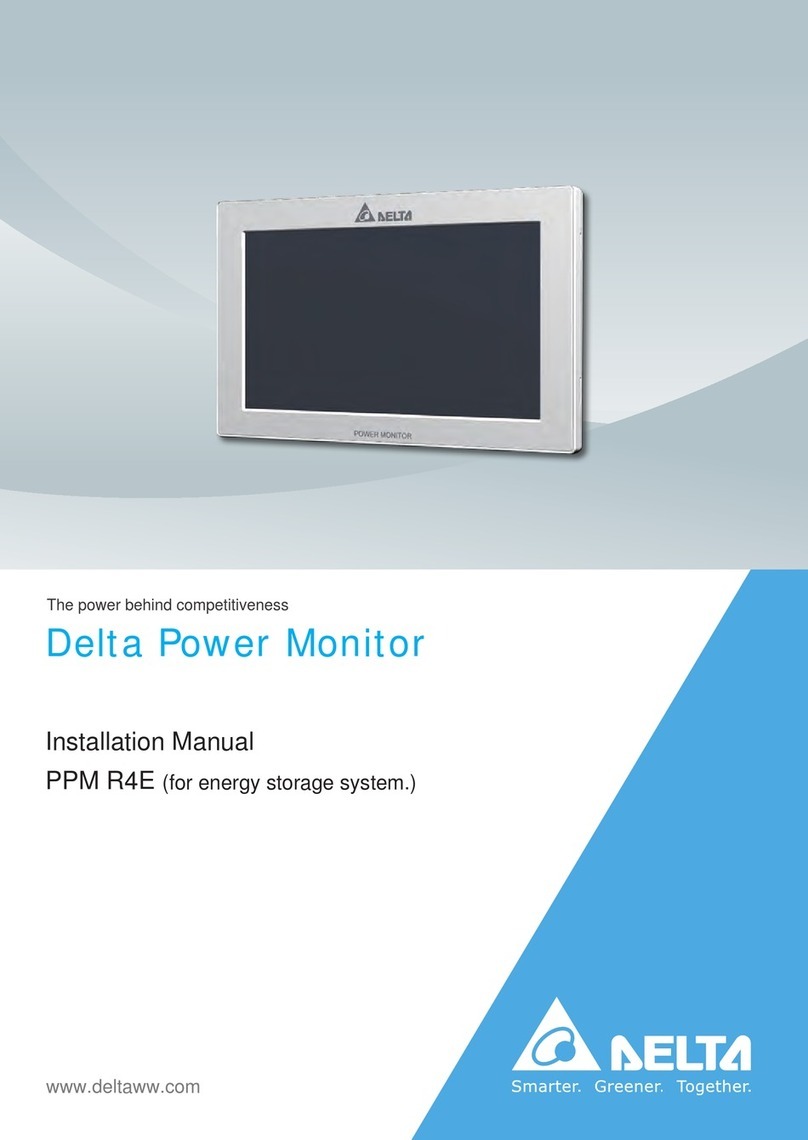
Delta
Delta PPM R4E User manual
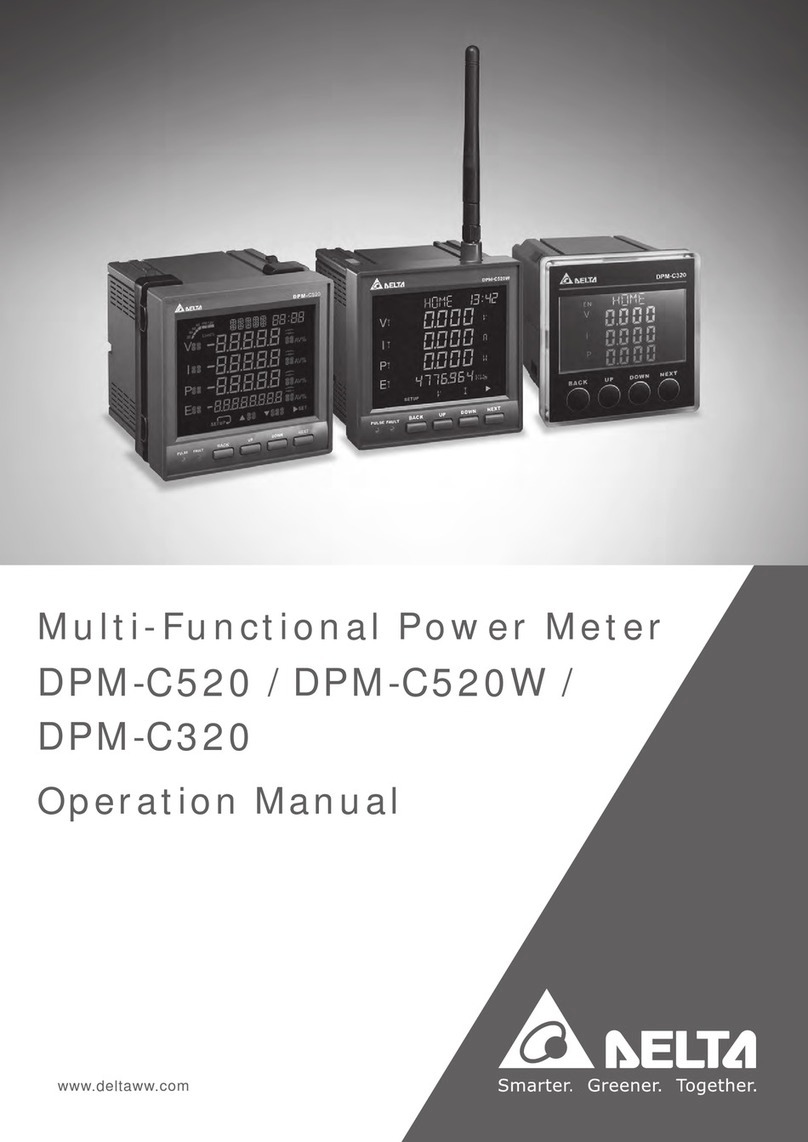
Delta
Delta DPM-C320 User manual
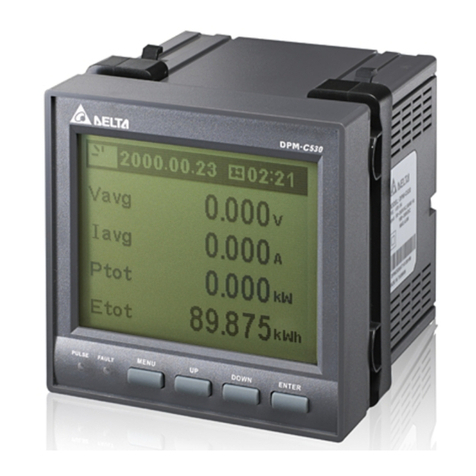
Delta
Delta DPM-C530 User manual
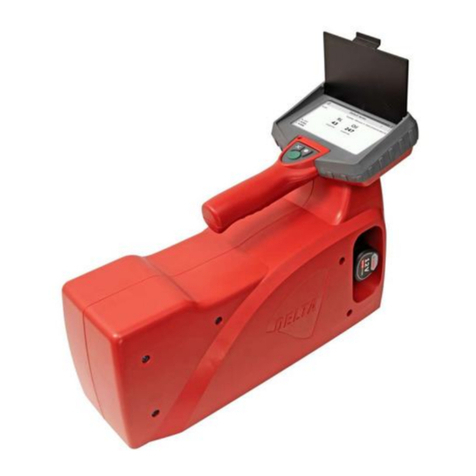
Delta
Delta LTL3000 User manual
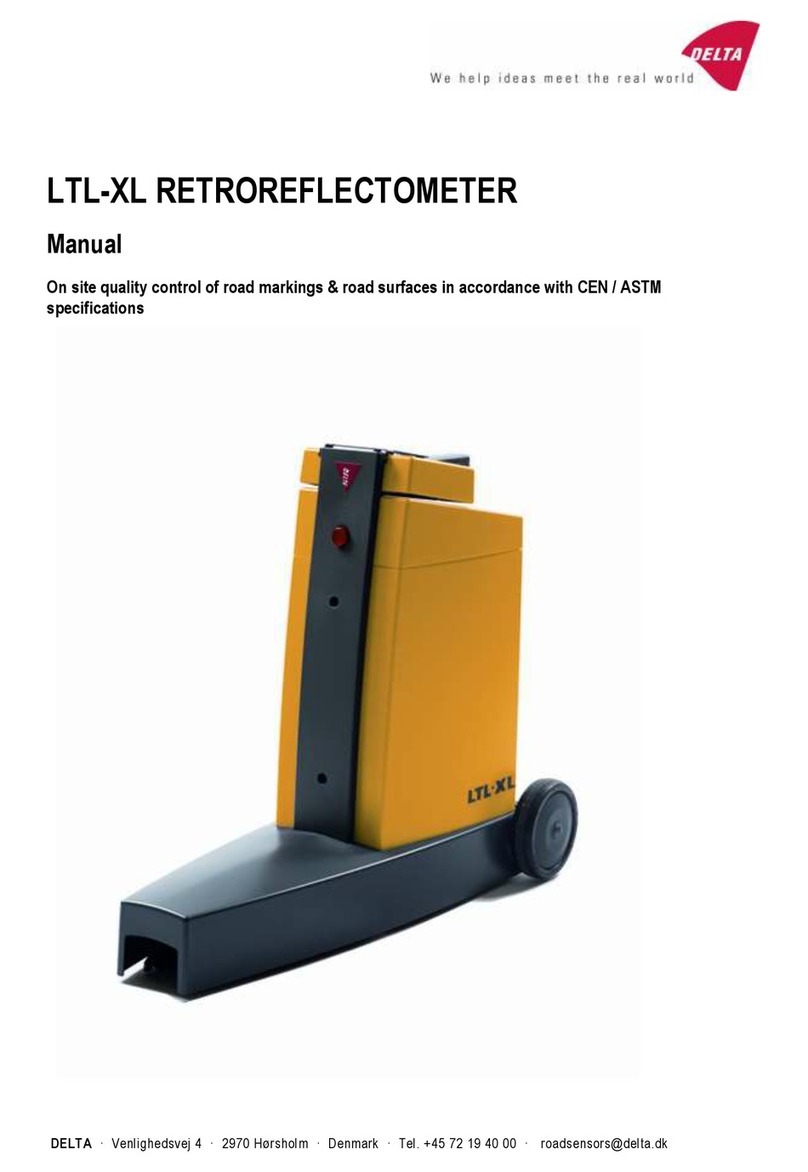
Delta
Delta LTL-XL User manual
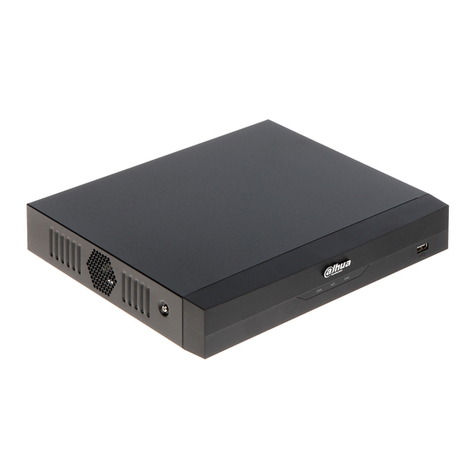
Delta
Delta XVR5116HS-I2 User manual

Delta
Delta DPM-C501L User manual

Delta
Delta LTL-XL User manual
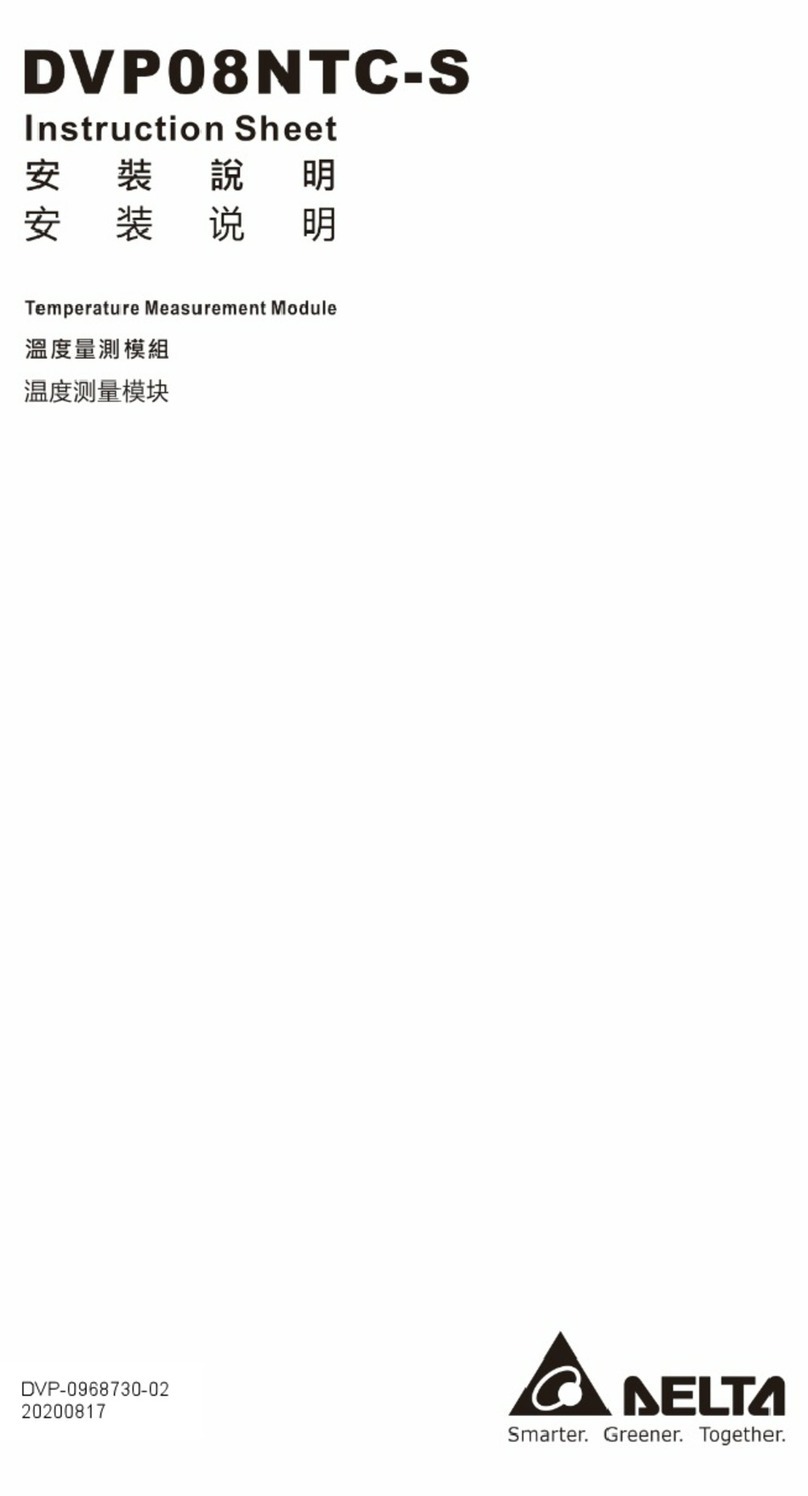
Delta
Delta DVP08NTC-S User manual

Delta
Delta HD2114.0 User manual

Delta
Delta REVEZ-HD-TRIO DVB-T/T2 User manual
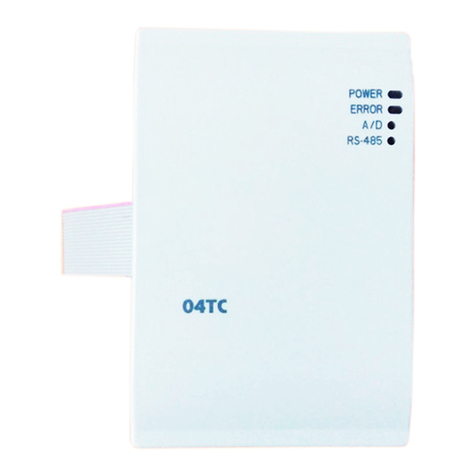
Delta
Delta DVP04TC-H2 User manual
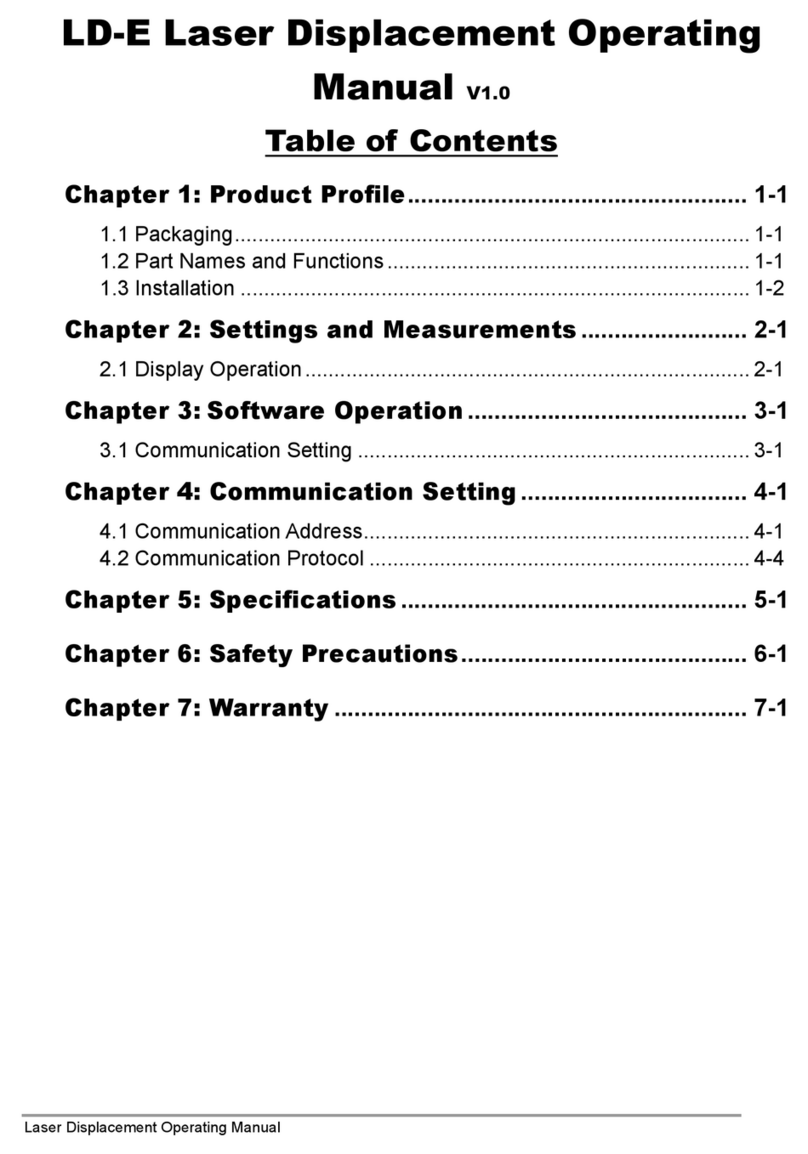
Delta
Delta LD-100E-M22 User manual
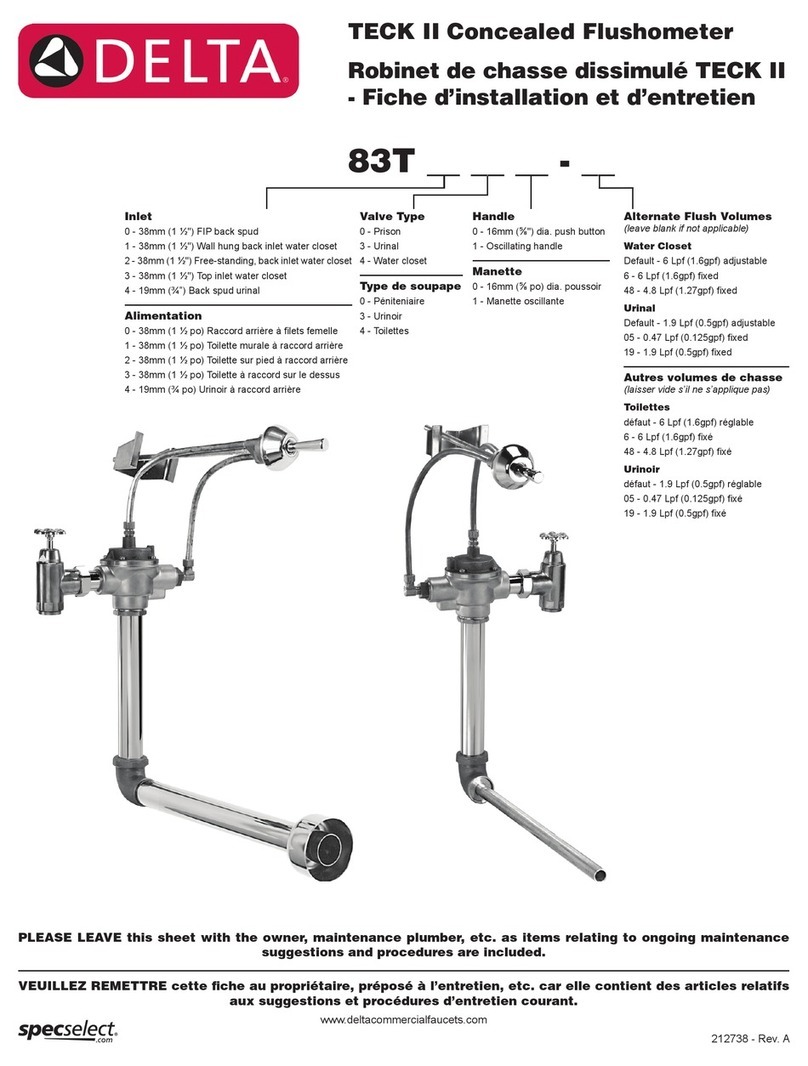
Delta
Delta TECK II User manual
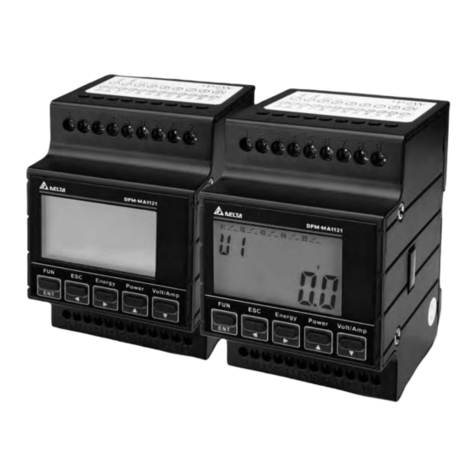
Delta
Delta DPM-MA1121 User manual
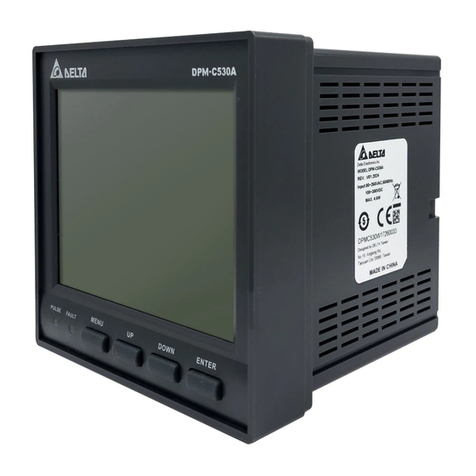
Delta
Delta DPM-C530A User manual
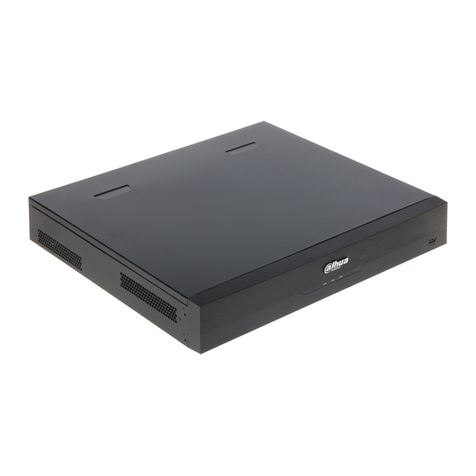
Delta
Delta XVR5432L-I2 User manual

Delta
Delta EMS 32-011 User manual
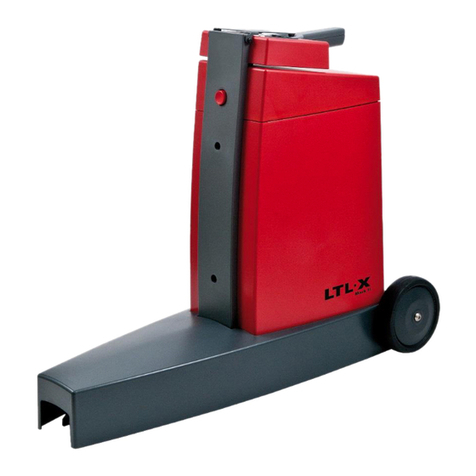
Delta
Delta LTL-X Mark II User manual
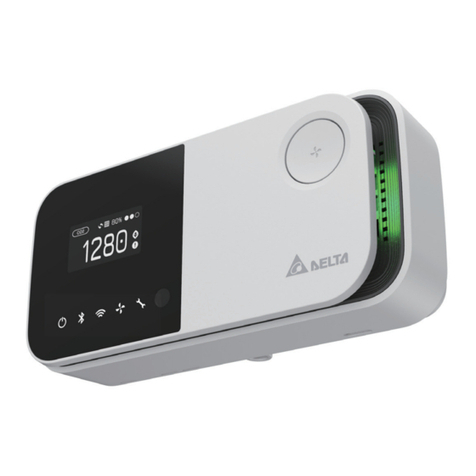
Delta
Delta UNO-C07X011 User manual

